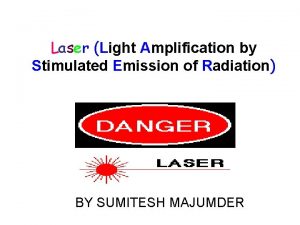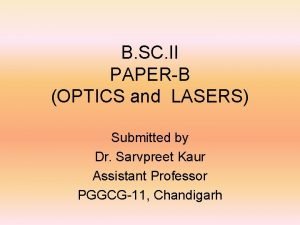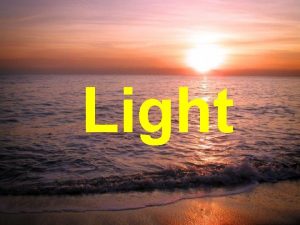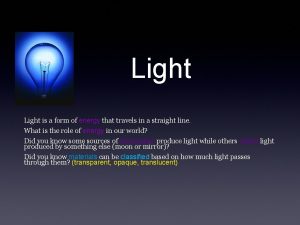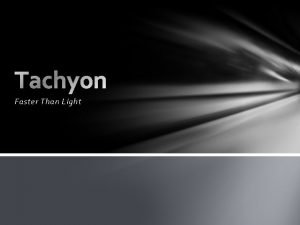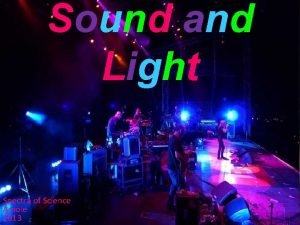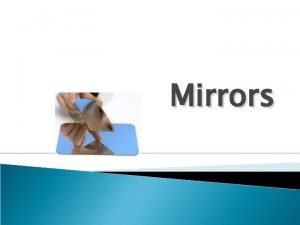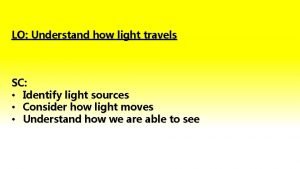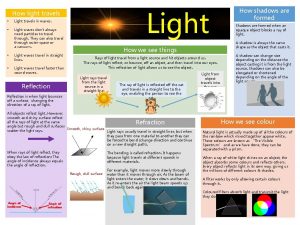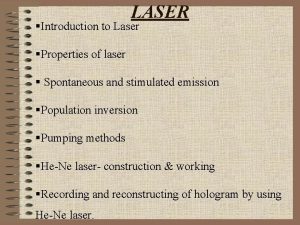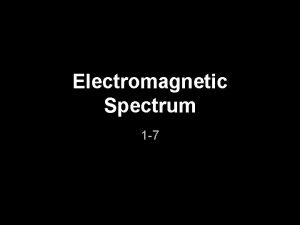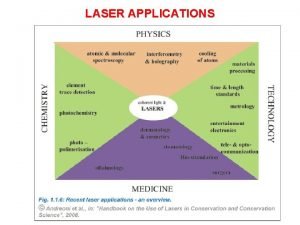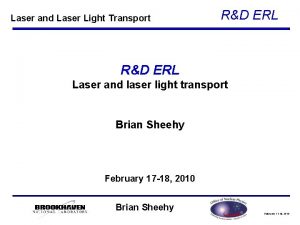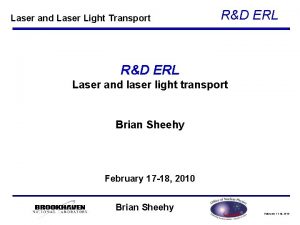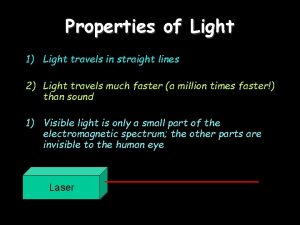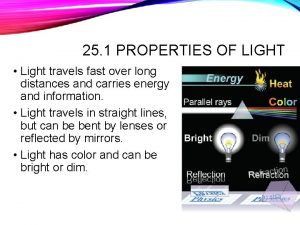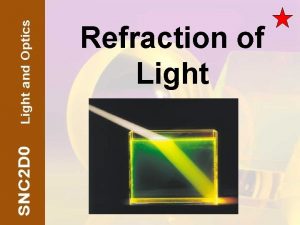Light Properties of Light u Light Laser travels



















- Slides: 19

Light

Properties of Light u Light Laser travels in straight lines:

u Light travels VERY FAST – around 300, 000 kilometres per second. At this speed it can go around the world 8 times in one second.

u Light travels much faster than sound. For example: 1) Thunder and lightning start at the same time, but we will see the lightning first. 2) When a starting pistol is fired we see the smoke first and then hear the bang.

u We see things because they reflect light into our eyes: Homework

Properties of Light summary 1) 2) 3) 4) Light travels in straight lines Light travels much faster than sound We see things because they reflect light into our eyes Shadows are formed when light is blocked by an object

Image position u You think in straight lines! u The image is located behind the mirror.

Diffuse vs Specular Reflection u Diffuse Reflection – Light incident upon a rough surface – Law of reflection still holds; Normals are not parallel. u Specular Reflection – Mirror like reflection – All Normals are parallel

Refraction u In which medium does light travel faster? (glass rod appears bent)

Speed of light u n is the absolute index of refraction. This is a measure of optical density. n is defined as the ratio of the speed of light in a vacuum to the speed of light in a new medium. u u u v is the speed of light in the new medium. c= 3. 0 x 108 m/s As the index increases the speed decrease. Draw a graph for index vs. speed.

Relative Index of Refraction u u u n is the relative index of refraction. If air is not used, then remember nrel = n 2/n 1 What is the relative index when going from diamond into lucite? u u If nrel < 1 ; speeds up If nrel > 1 ; slows down

Refraction n(water)=1. 33; n(glass)=1. 50; n(air)=1. 00 Calculate the speed of light in water and glass. Vw = 2. 26 x 108 m/s Vg = 2. 00 x 108 m/s

Refraction n 1 - from n 2 - into u When a wave slows down it bends closer to the normal. {less to more – toward} n 2>n 1 u When a wave speed up it bends away from the normal. {BLA – Big ―› Little – Away} n 2<n 1

Refraction u If light rays bend closer to the normal when slowing down, why does the glass rod seem to bend away form the normal?

Apparent Depth u u u R – Real Depth A – Apparent Depth Diverging rays enter your eyes. You “think” in Straight Lines. A virtual image appears to come from point y

Apparent Depth u If the chest is 20 m below the surface at what depth will the image appear? Assume nsea water = 1. 34

Snell’s Law u n 1 sinθ 1 = n 2 sin θ 2 u v 1/v 2 = λ 1 / λ 2

Optics Mirrors and

Reflection u We describe the path of light as straight-line rays u Reflection off a flat surface follows a simple rule: – angle in (incidence) equals angle out (reflection) surface normal same exit ray – angles from surface incident raymeasured angle reflected ray “normal” (perpendicular)
 Properties of laser light
Properties of laser light A straight glass rod appears to bend
A straight glass rod appears to bend Stimulated emission
Stimulated emission Properties of laser light
Properties of laser light Monochromatic light eg
Monochromatic light eg Diagram of light travels in a straight line
Diagram of light travels in a straight line When light travels from an optically denser medium
When light travels from an optically denser medium How.does.light travel
How.does.light travel Light travels 3 00 000 km/s. is it velocity or speed
Light travels 3 00 000 km/s. is it velocity or speed What form of energy that travels in a straight line
What form of energy that travels in a straight line Light can travels from the sun
Light can travels from the sun Tachyon
Tachyon Picture how light travels
Picture how light travels Draw an example of how light travels as a wave.
Draw an example of how light travels as a wave. Light always travels in
Light always travels in How light travels diagram
How light travels diagram Sick light curtain laser alignment tool
Sick light curtain laser alignment tool Light light light chapter 23
Light light light chapter 23 Into the light chapter 22
Into the light chapter 22 Light light light chapter 22
Light light light chapter 22


